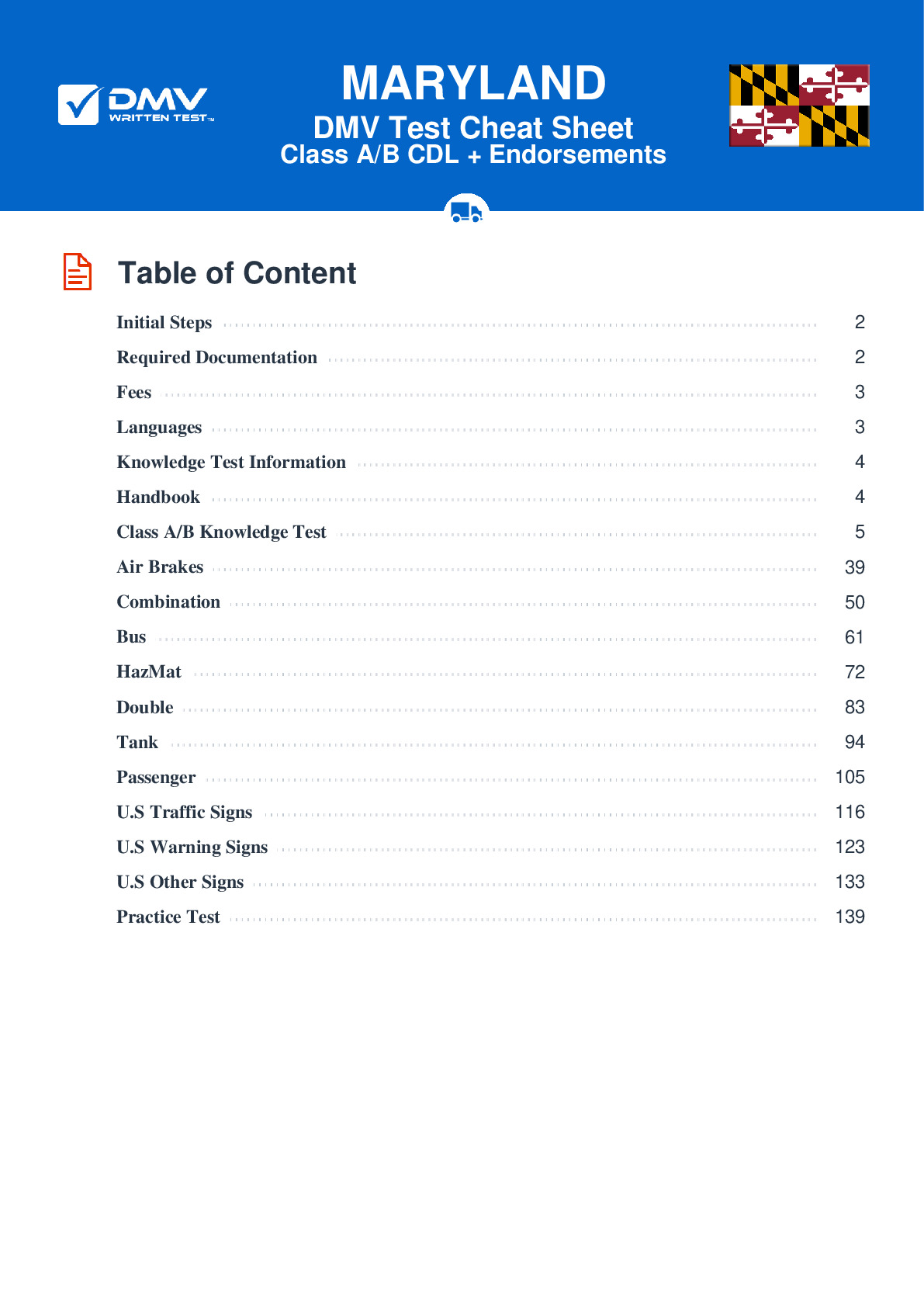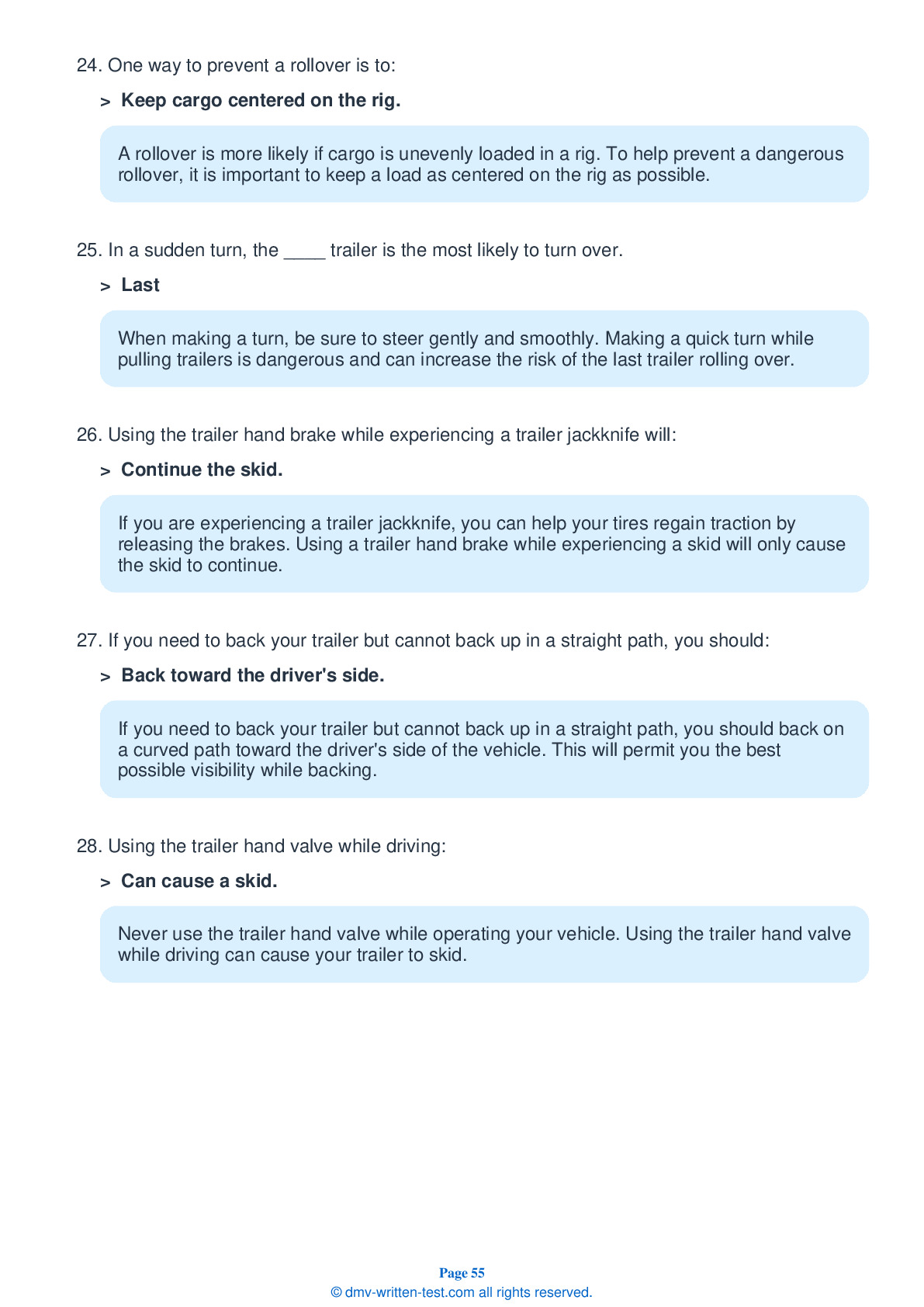Combination
All applicants who are applying for a Class A CDL should be prepared to take the Combination test. This test covers information found in Section 6 of the Maryland Commercial Driver License Manual. Section 6 provides the information needed to safely operate tractor-trailers, doubles, triples, and straight trucks with trailers. The test is made up of 20 multiple-choice and true/false questions, and applicants will need to correctly answer a minimum of 16 questions to pass. The Combination test is not a replacement for the Double/Triple endorsement test.
Number of Question
Passing Score
1. Bobtail tractors are ____ to stop than tractors attached to full semitrailers.
Explanation
Bobtail tractors are tractors that are not attached to any semitrailers. When operating a bobtail, you should be aware that stopping can be difficult and that it will take a longer distance to come to a complete stop than a tractor attached to a loaded semitrailer.
2. When a combination vehicle goes around a corner:
Explanation
When a vehicle goes around a corner, the rear wheels follow a different path than the front wheels. This is called off-tracking. This effect is especially pronounced on vehicles with trailers.
3. The trailer hand valve should be used:
Explanation
The trailer hand valve should be used only to test the trailer brakes. It should not be used while driving because it may cause the trailer to skid.
4. Look into the back of the fifth wheel:
Explanation
While inspecting a coupling, you should go under the trailer and look into the back of the fifth wheel. Ensure that the fifth wheel jaws are secured around the shank of the kingpin.
5. In a combination rig, it is best to make:
Explanation
When driving a combination vehicle, it is important to brake well in advance and look far ahead of your vehicle to avoid the need for sudden stops. Making habits of these actions will help you prevent your trailer from jackknifing.
6. The "crack-the-whip" effect can:
Explanation
Trailers can overturn as a result of the "crack-the-whip" effect. The last trailer in a combination is the most prone to tip over due to this effect. Drivers should be aware of the rearward amplification of their specific vehicles and drive accordingly.
7. If you are backing and become unsure about your path of travel, you should:
Explanation




